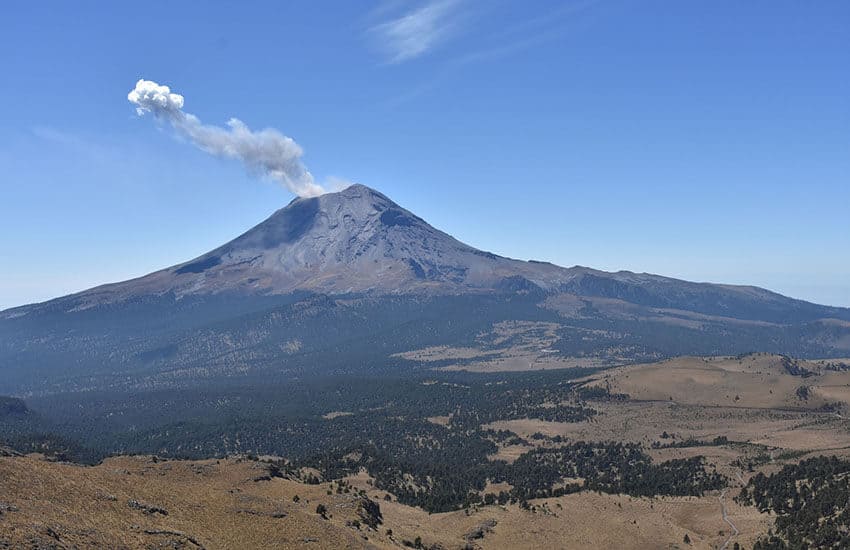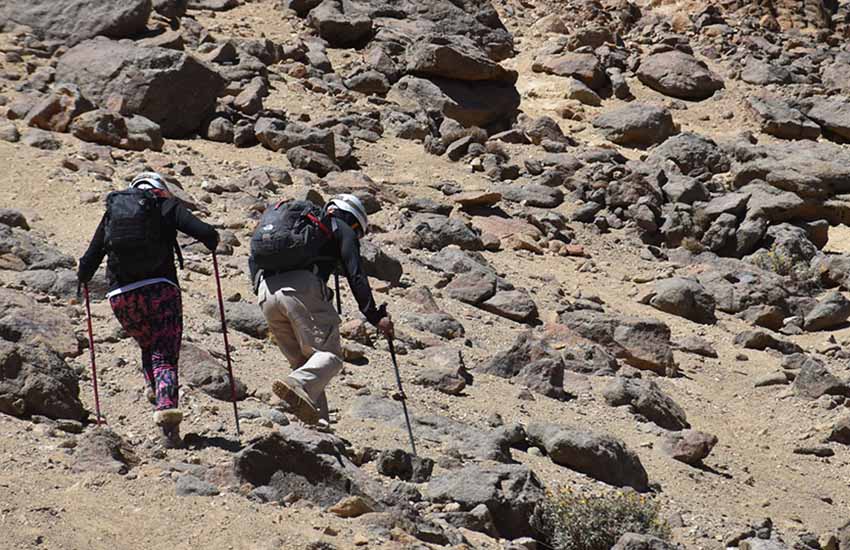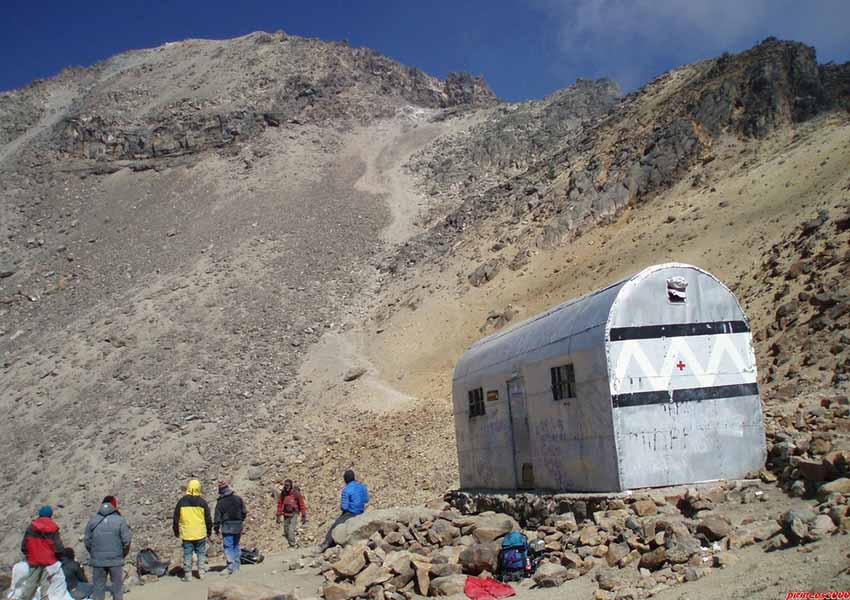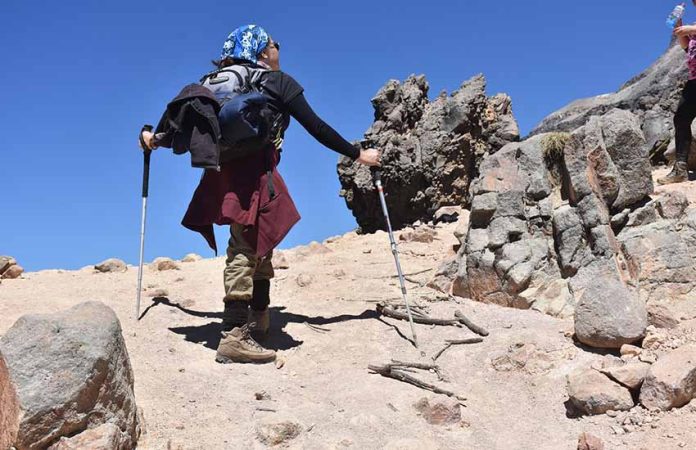Iztaccíhuatl — Náhuatl for “the White Woman” but affectionately known as the Sleeping Woman, is a dormant volcano and, at 5,264 meters (17,270 feet), Mexico’s third highest peak. Living as I do in Chipilo, Puebla, it’s impossible to escape her. I see her and Popocatépetl, the active volcano, from the front of my home and on drives to Cholula or Puebla.
It was, and still is, more than a dormant volcano for many of Mexico’s indigenous people. Both Iztaccíhuatl and Popocatépetl are revered as gods and sources of water.
I’m not accustomed to climbing anything much larger than a modestly sized hill, but Martha Cabrera, my girlfriend, who’s significantly more adventurous than me, was itching to climb Iztaccíhuatl.
When Ari Castro Galicia, a good friend of mine, happened to mention he frequently takes people up the volcano, it seemed like it was time to try.
Castro was an army mountaineering instructor, and since he retired two years ago he has guided people up Iztaccíhuatl and other mountains. We were only going to hike to a place called El Refugio (the refuge), which is about 4,700 meters tall, but it still promised to be challenging.

“How far one can go depends on the experience of the person and the conditions,” said Castro. “One needs to be in good shape.”
One also needs to be properly prepared.
“A person needs two liters of water, minimum,” Castro detailed, “[with] high-calorie food like nuts and chocolate, gloves, mountain boots, a helmet and walking sticks.” He also told us to wear warm clothing and to bring sunglasses, sunscreen and sandwiches.
As he listed what we needed, it started to sound more than a little challenging.
Martha and I drove to Iztaccíhuatl-Popocatépetl National Park, which is about 40 miles almost directly west of Puebla city. A few miles past San Nicolás de los Ranchos, a small pueblo on the Paso de Córtes highway, the pavement ends and the road is bumpy, hard-packed dirt for several miles.
Six of us gathered at the parking lot of the welcome center at 9 a.m., where we registered and paid 50 pesos.
The hike begins at La Joya, located at 4,000 meters above sea level. Before continuing, Castro said a short prayer. “I only ask permission from the mountain to climb and entrust myself to God,” he told me.
Shortly after leaving a short, flat stretch, you encounter a fairly steep part. Despite a weekly exercise regimen of three high-intensity workouts on a stationary bike and three days of swinging Russian kettlebells, I found myself huffing pretty hard.
Alejandro Guzmán Machado, Castro’s friend and a second guide, reminded everyone, “This is not a race. There is no rush.”
The hike to El Primer Portillo, where we had our first short break, took 50 minutes. It was cold enough that we could see our breath.
Soon after we started hiking again, smoke was pouring out of Popocatépetl. “Is Popo angry or welcoming us?” I asked.
“He is welcoming us,” Guzmán said.

When, after 50 minutes, we reached the next rest stop at El Segundo Portillo, I was feeling the effects of the altitude and the climb, blissfully unaware that up ahead were even more challenging sections.
There’s a field with large boulders that one must carefully clamber over, and it was here that I fully realized the wisdom of wearing a helmet and using walking sticks. After that, the path narrows. On the left is a very steep drop. I wouldn’t say it was an overly dangerous stretch, but I found myself leaning as far to the right as possible.
Then came my favorite section: El Arenal, the sandbank: a long, fairly steep stretch of soft sand where you sink to your ankles with each step. To traverse it means firmly planting your walking sticks in the sand and then pulling yourself along with your arms. Perversely, Paul Simon’s song Slip Sliding Away got stuck in my mind.
At that point, we had hiked for 3 1/2 hours and we still weren’t through El Arenal. That’s when I looked up and saw Martha sitting and signaling, “Ya. No más” or “Enough. No more.”
I slogged up and sat down beside her. When she said she didn’t want to continue, I gave a silent prayer of thanks because being a chivalrous man, I knew I couldn’t very well leave her; but I was spent.
Guzmán said El Refugio, our destination, was “muy poquito más,” — very little left to go. But I’ve been on enough hikes and pilgrimages in Mexico to know that muy poquito más can mean anything from a few minutes to a couple of hours, so I asked Castro how much longer.
“About 30 minutes,” he said.
I threw in the towel.
Guzmán and his niece, Diana Laura Matú Guzmán, continued on while the rest of us ate our lunch.
I asked Castro how far we’d hiked, fully expecting it to be a few miles. “About two and a half kilometers [1 1/2 miles],” he said.
Stunned, it was then that I understood how tough a hike it really was. “Well, I’m going to write that we went 10 kilometers,” I told him.
Getting back down was a lot faster — under three hours — and I actually found myself having fun as I slid down El Arenal, although the strong, cold wind that had kicked up kept the fun to a minimum. When we got back to the trailhead, Guzmán placed his hand on a boulder to pray. “I thank God we returned,” he explained.

Despite congratulations and handshakes all around, I was a little disappointed that I hadn’t made it to El Refugio. I felt a little better when Castro said that only about 20% of the people he’s taken up Iztaccíhuatl make it there.
Matú, Guzmán’s niece, made it on her first attempt; she may have had some extra incentive.
“When I was five years old, my uncle promised me that when I was 15, he would take me up The Sleeping Woman,” she explained. “Time passed, and we lost contact because of his work. Last year, I saw him again and reminded him of the promise. I’m 23 now, and 18 years later, he kept his promise.”
“I loved it,” she said. “It was hard, but I want to go again.”
She may have to wait until next year since climbing season runs from October through late April.
Castro and Guzmán have both climbed Iztaccíhuatl dozens of times and will continue to do so. “The mountain has an inexplicable attraction that makes you return again and again and again,” Castro said.
I don’t know if a guide is a requirement, but I’m convinced it’s necessary. In addition to knowing the way and keeping people motivated, Castro and Guzmán carry everything needed to attend to any type of problem.
If you’re interested, you can email Castro at insercion_360@hotmail.com.
Joseph Sorrentino, a writer, photographer and author of the book San Gregorio Atlapulco: Cosmvisiones and of Stinky Island Tales: Some Stories from an Italian-American Childhood, is a regular contributor to Mexico News Daily. More examples of his photographs and links to other articles may be found at www.sorrentinophotography.com He currently lives in Chipilo, Puebla.
